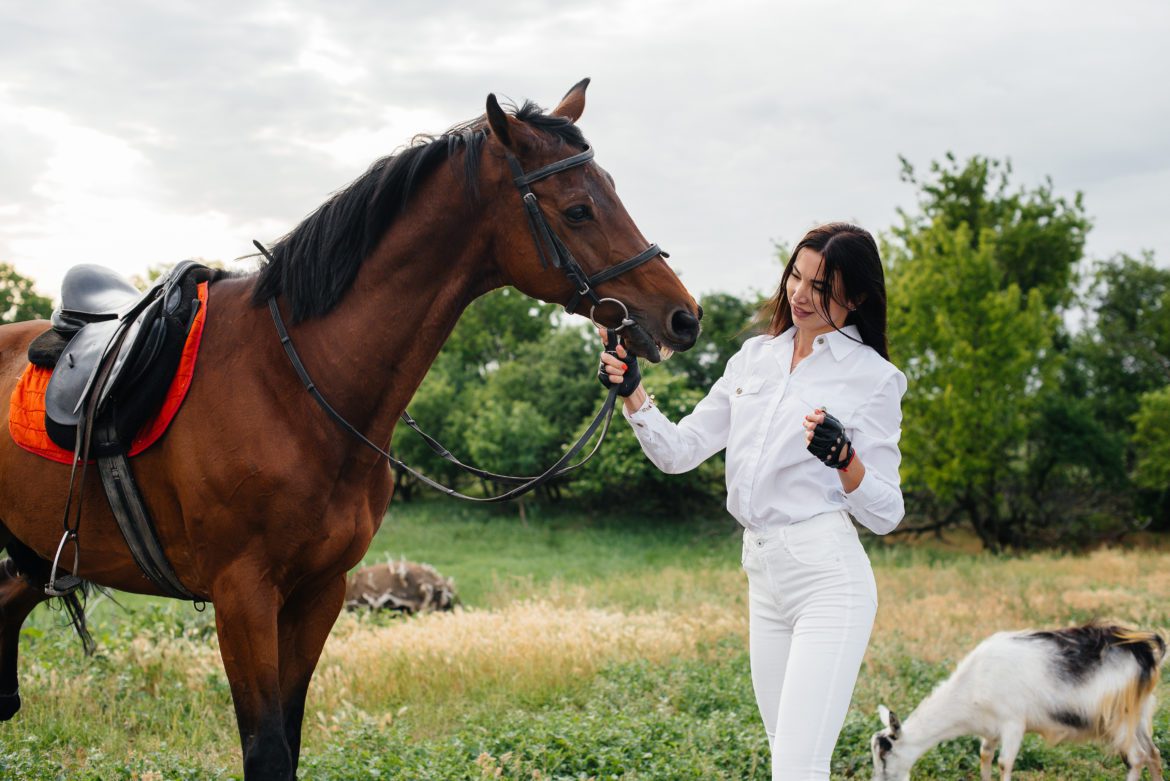You’re watching “Yellowstone” thinking, “I wish I could ride like that, too!” The fact is, you can—as long as you understand you can’t just jump onto the back of a horse and ride off into the sunset. Here’s how to prepare for your new favorite activity:
1. Find a good stable
Even if you used to ride when you were growing up, your first step is to find a good stable where you can take lessons. Meet the instructors and be sure the one you choose is someone who is confident and patient.
2. Lessons are a must
Although you can take group classes, if you can schedule private lessons, you’ll learn proper riding technique right out of the gate—how sit properly in the saddle, learn the basic gaits, and position your body to move as one with the horse. Lessons are the best way to learn that the proper use of your reins, feet, and legs is a form of language that allows you to communicate with your horse. You’ll also understand why it’s important to always use “soft hands” on the reins and a calm voice to soothe your horse.
3. Gear and apparel
Before you take your first lesson, go over with your instructor the kind of clothing and gear you’ll need. A properly fitted, best quality riding helmet is a must for safety’s sake. Jodhpurs are required if you plan to get into dressage or show jumping, but as a beginner, a pair of jeans that doesn’t bind you in the knees, leg, or crotch is fine. Even in hot weather, you’ll want a long-sleeved shirt to protect you from the sun; in the winter, a riding jacket or fitted jacket will keep you warm. Not all gloves are appropriate for riding, so invest in good riding gloves. Never wear dangling jewelry (though simple posts for pierced ears are okay) and never wear a scarf unless it’s an ascot. If you wear eyeglasses, be sure to have an elastic strap that keeps them tightly fitted to the back of your head. Other than your riding helmet, your riding boots are the most important investment you will make. Whether you buy knee-high boots or ankle boots is something you can discuss with your instructor, but you will definitely avoid sneakers, hiking boots, or fashion boots. To be properly fitted, go to an equestrian store that sells riding boots, so that your riding boots become an extension of your leg.
4. Expect soreness and know how to deal with it
The first time you get off a horse (and for many times after) you will feel sore and even weak in the legs because, as you ride, the muscles you are using are getting more use than normal. A warm bath and a massage go a long way, but better yet, also incorporate stretching exercises into your morning routine. Don’t overdo it by also going to the gym, running, or playing a tough tennis match — if you’re riding, that’s your workout!
5. Riding for Life
As you advance as a rider, your interest may branch off into one of many directions beyond riding as a leisure sport. There’s dressage, jumping, cross-country, and for those who want to engage in an equestrian sport but not necessarily on top of a horse, there’s driving and four-in-hand. Whichever equestrian sport you choose, riding can give you hours of serenity and great pleasure for many years to come. Just ask Queen Elizabeth — she was still riding at the grand young age of 94.
6. Watch and read
Read all you can about riding. Watch videos. Heck, watch National Velvet with Elizabeth Taylor and Mickey Rooney, which shows so clearly the understanding between a human and a horse. Riding frees the body and soul with a silent language, spoken with love. Learn to ride and see for yourself.


